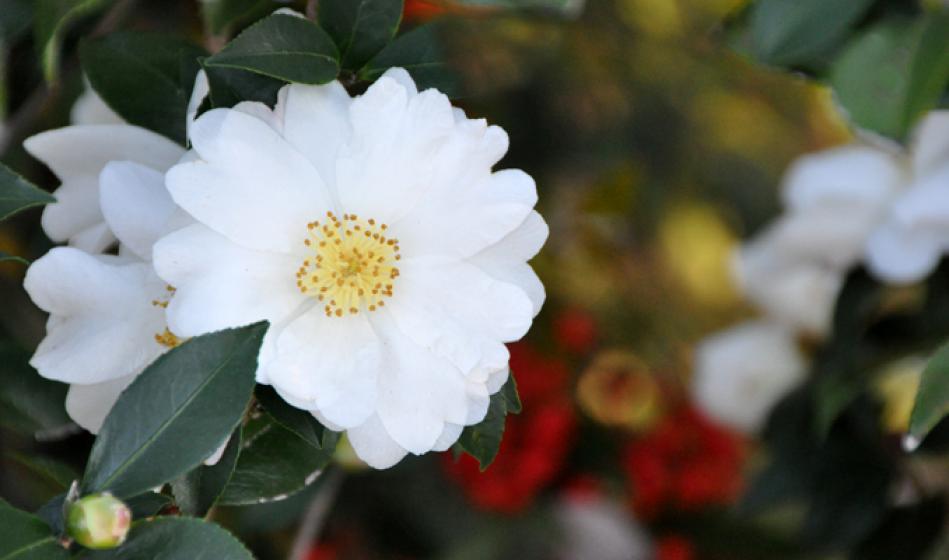When winter seems at its bleakest, Hampton Roads gardeners have a colorful treat in store for them -- the beautiful blooms of camellias. Camellias have been a part of the southern landscape for almost 200 years. Native to the Orient, these graceful beauties were introduced into the U.S. near Charleston, South Carolina in 1786. Camellias flower in the fall and winter with blooms appearing October through March. Flowers range in color from pure white to dark red, while some cultivars offer multi-colored or variegated blooms. Flowers can be saucer-shaped single or double blooms and even ruffled like the Peony camellia. For the remainder of the year, their evergreen foliage is an attractive glossy green providing winter interest that last all year.
Most camellias are shrub-sized and compact and can serve several functions in the landscape. Whether they are planted as a hedge line, mixed with other shrubs, planted in a container, or situated as a standalone bush, camellias don't ask for much and yet give so much beauty in return. Here's just few of our faves:
Charlie Bettes - an early season bloomer that produces some of the largest blooms you will ever see on a camellia. Flowers are bright white with lemon yellow stamens. Plant full sun to partial shade.
Jacks - spring flowering variety that boasts large, pink blooms that can span up to 5 inches across. Lustrous dark green evergreen leaves last all year long. Prefers partial sun to partial shade...
Lemon Glow - early spring bloomer that features formal double blooms that open yellow and fade to creamy yellow. Prefers sun to Partial Shade.
Black Tie - late winter to early spring bloomer featuring showy, fragrant, dark red double blooms on glossy, evergreen foliage. Prefers part shade to part sun.

